Graham Reid | | 8 min read
The Move: Fire Brigade

Anyone dumb enough to rely on an encyclopedia of rock or -- worse -- that self-described disgrace which is "Classic Hits" radio, would be forgiven for not knowing that the Move ever existed.
Those DJs at "classic rock" certainly would have no clue . . . but we expect them to be clueless, I suppose.
Shame on them.
It seems the Move -- despite their innovation and actual classic hits -- have been written out of rock history, even though they cracked seven top 10 singles in Britain between 1967-72 (their first four consecutive hits all went top five, and did well in Australasia also).
They also took over the Who’s weekly slot at the Marquee in London and had a stage act notable for the destruction of guitars, amps, television sets and -- one night at the Roundhouse -- a 1956 Chevrolet. (That would be a 15 years before the Plasmatics, right?)
The Move were also in vanguard of making promotional films to accompany singles.
By the way, the precient Move were the first band played on the BBC’s new pop station Radio 1; and -- not the least -- after they called it a day two members went on to found other high-profile bands, one being a huge stadium act of the Seventies.
Yet despite all that, the Move out of Birmingham remain at best a footnote in rock history.
The reason is simple: the Move were a singles band in an album era.
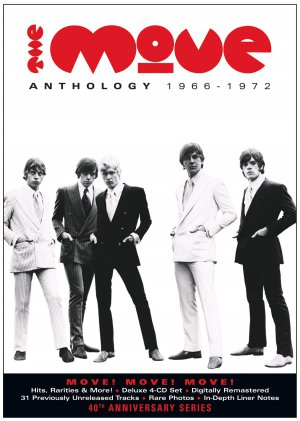
And yet the Move really were contenders -- as the four disc box set The Move Anthology 1966-72 released in in 2008 proved.
But . . .
A four CD set from a band that had fewer than a dozen decent singles?
Hmmm.
 The Move were essentially a Birmingham supergroup.
The Move were essentially a Birmingham supergroup.
Before the word "supergroup" was invented.
They came together when its members Carl Wayne, Roy Wood, Taylor Burton, Ace Kefford and Bev Bevan bailed from other top bands and joined forces.
But . . .
Initially Kefford and Burton, who were in separate bands, had been encouraged to get together by a young guy they backed called Davy Jones, later to become David Bowie. They hooked in Wood who had been starting to write his own songs, then grabbed Wayne. A local drummer named John Bonham (later to join Led Zeppelin) was first considered but they settled on Bevan.
Within weeks they had been adopted by the ambitious, dodgy, unscrupulous, fearful but effective manager Tony Secunda who had -- with producer Denny Cordell -- taken another Brummie band, the Moody Blues, to the top of the charts with a faithfully sound-alike copy of Bessie Banks' wonderful Go Now.
Secunda secured the Move the residency at London’s Marquee which the Who had vacated, and they were an instant sensation for their energetic, not to say violent, stage antics.
They were also a killer covers band: they sang Motown soul and old time rock’n’roll with as much drum and bass punch as the Who, had a monster guitar sound . . . and found themselves on the same festival bills as Cream, the Small Faces, the Who, Spencer Davis Group and other top bands of the day.
They could also do Beat-era British-r'n'b pop as well as anyone (even in the studio they could tear into the Isley's Respectable, like the Merseybeats on uppers.)
The box set opens with a raw, unreleased and recently reconstructed recording of Roy Wood's original You're The One I Need from January '66 . . . . and frankly it occupies the same garageband r'n'b space as the early Stones and the Downliners Sect. It is a lost garage classic and sounds like this . . .
You're The One I Need
They were dropped from opening for the Walker Brothers as being unsuitable, and Wayne told journalists, “We’re not psychedelic, we’re showmen. The young people like violence.”
Sometimes dressed in gangster suits with spats, they looked very different from the Carnaby Street boulevardiers of the day.
Then Wood seriously started to write songs, hit songs.
Their debut single Night of Fear (with its memorable guitar riff ripped off from Tchaikovsky’s 1812 Overture, the bit before the cannons come in) went to number two on the British charts in early 67 . .
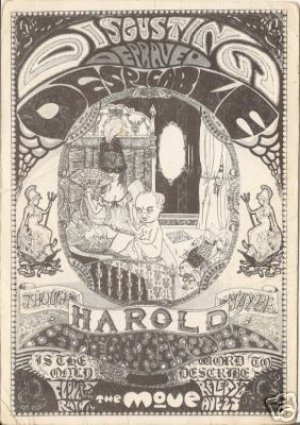 And those historically-deaf'n'blind "Classic Hits" boys and girls can check out what happen with the Move regarding the then-UK PM Harold Wilson and the postcard they included with their Flowers in the Rain single.
And those historically-deaf'n'blind "Classic Hits" boys and girls can check out what happen with the Move regarding the then-UK PM Harold Wilson and the postcard they included with their Flowers in the Rain single.
They landed in court but also had their revenge: Vote For Me is in their box set, and they meant not a note of it.
Then came I Can Hear The Grass Grow (number five), Flowers in the Rain (number two), Fire Brigade (number three) and Blackberry Way (number one in early 69).
Yes, they were followers rather than leaders when it came to the psych-pop/rock era from '66 . . . but on their singles they nailed it as much as the Beatles did within the constraints of those few minutes available of a 45rpm.
That was -- and is --pop genius.
Yet, problematically, each of these songs sounded different to its predecessor.
Some would say there never was a “Move Sound” as there was with the Who, Beatles or Stones. The Move had three singers . . . and their superb single Fire Brigade was the first to feature Wood (who sounds amusingly and unrepentantly Brummie, and rude).
Things faltered after the pre-glam Blackberry Way. (And the original b-side was going to be Wood's suicide-pop of a girlfriend jumping onto the train tracks Wave the Flag And Stop The Train).
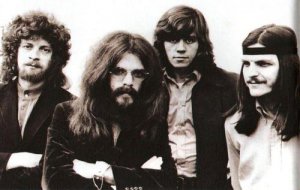 There had been, and continued to be, line-up changes and by the end of their career - - just a couple of years later from the original five-piece -- they were down to a quartet.
There had been, and continued to be, line-up changes and by the end of their career - - just a couple of years later from the original five-piece -- they were down to a quartet.
Then a trio with Wood and Bevan and the new guy.
And even that version of the Move was precarious because the new guy was Jeff Lynne and, with Wood, he had conceived the idea of another band melding classical strings and rock’n’roll to be called . .. The Electric Light Orchestra.
ELO in fact launched their first single 10538 Overture while the Move were still hobbling along playing dreadful clubs in the provinces.
It was another Yardbirds/New Yardbirds/Led Zeppelin transition . . . but, more so than the much hailed Yardbirds, the Move were lost on the rapid shuffle.
“The Move is holding us back musically," Wood told journalists. “I would be happy to see the group die, but only when the Electric Light Orchestra is a success. Once ELO find their first foothold the Move will cease to exist.”
And so on borrowed time the Move finally collapsed -- but not in quite the way Wood expected. Just as the ambitious ELO (playing Sgt Peppers-inspired rock'n’roll) was about to come into being, Wood walked out on the project and started Wizzard which enjoyed great success with the single See My Baby Jive. In fact the Move’s final single California Man (number seven in Britain in mid 72) was very much a de facto Wizzard single, a slice of rock’n’roll revivalism.
So Lynne had ELO to himself. He took them up the charts and to America -- where the Move hadn’t had much success at all.
So the Move . . . and a four CD collection?
Aside from those great singles (and the demos, unreleased songs and judiciously selected album tracks) most interest in the box set alights on the second disc which captures them live at the Marquee on two nights in 1968 pieced together and remixed -- and you can hear the wayward magic at work.
They deliver incendiary versions of the thumping Flowers in the Rain and Fire Brigade, but it is in the other material where you can understand just why they would have been too difficult to contain on an album.
They fire off a terrific version of the Byrds’ So You Want To Be a Rock’n’Roll Star, a magnificently throaty and soulful Piece of My Heart (only just made famous by Janis Joplin), the Everly Brother’s The Price of Love, the soul standard Your Love Keeps Lifting Me Higher and Higher, and they go out with a seven minute version of Gary Wright’s Sunshine Help Me in which they give Clapton and the Cream a run for their money in live, improvised rock.
It is an extraordinary, and diverse, showing -- and brings to mind the Jam in their later days when Paul Weller pulled soul, blues and pop economy into the rock context.
The final disc is the Move in their latter days when they were trimmed down and getting into heavier rock. It opens with a 10 minute version of their pop hit I Can See the Grass Grow recorded at the Fillmore in 69 and reminds you more of Vanilla Fudge than the Brummie band in gangster gear. They include guitar references to Born to be Wild, Night of Fear and the theme to Peter Gunn, and there is a drum solo.
And that was the Move also: they were too diffuse to be contained.
They could deliver memorable chart singles . . . but then scan the writing credits on the songs on this magnificently presented and thoroughly annotated collection (a 10,000 word essay!) and you will see just how far they reached: aside from those already mentioned there are versions of songs by Tom Paxton, Todd Rundgren, and Brill Building or jobbing British songwriters. And a swag of impressive material from Wood which never made singles and probably should have. They certainly influenced Paul Weller and T. Rex.
Their final single California Man was later covered by Cheap Trick. And when -- on the box set -- they played I Can Hear The Grass Grow in '69 at the Fillmore East they extended it to ride the riff of Steppenwolf's Born to Be Wild. And as the American's say, "It fit".
The Move were never a cool band to like, but they didn’t care.
In their brief hit-making heyday only one of them even bothered to move to Swinging London.
At a time when others were smoking dope and taking acid they were lager-lovers -- and none of their so-called psychedelic singles about flowers owed anything to drugs.
Later they did all that -- which explains the extended material on the final disc and songs with titles like Turkish Tram Conductor Blues . . . and why they were a hip underground band in the States at the time (with sort of I Am the Walrus-meets-Cream).
For a few years at the start of their short career they were simply one of the best pop-rock/psyche-pop bands in Britain.
But as their box set collection proved, the Move were also much more than that.
Much more.
They deserve to be on "Classic Hits" radio -- and in those encyclopedias of rock.
Yeah, like that'll happen.
Those self-aggrandising radio boys'n'girls on "Classic Hits" never got any of this.
I pity them . . . . and their pre-programmed playlists.


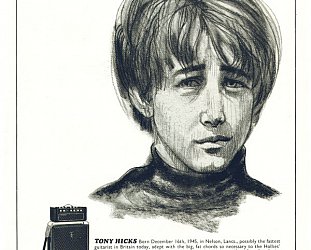
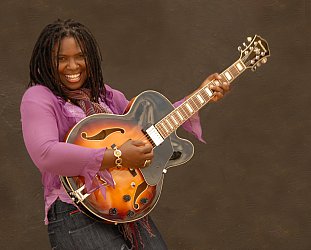

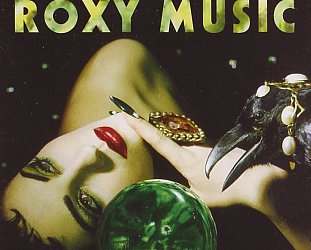

Peter Huitson - Feb 24, 2015
Excellent article, Graham - you are so right too, a much overlooked band. I actually have the box set in my collection currently and your article has inspired me to haul it out and give it another blast!
SaveThe Riverboat Captain - Feb 25, 2015
So true, so true. Classic rock radio should play more Move too.. take this, for starters: https://www.youtube.com/watch?v=5hpNEpb1OWg GRAHAM REPLIES: I listened to some rock stations for a whole day and their "memory" (presumably programmed from abroad) was highly selective, and didn't even include Steppenwolf so . . . More about the giveaways and presenters. Bullshit self-centred radio really. Nice to hear Maroon 5 there however because they really "rock" . . . Ho ho ho.
SaveGraham - Feb 25, 2015
There were indeed an excellent band. Never saw them live but always enjoyed the singles as they cascaded out. Jeff Lynn was part of the wonderful Idle Race prior to Move/ELO and of course Roy Wood is responsible for that Christmas song. Shame that the box set you're plugging is not easily or affordably available down here in the deep south. GRAHAM REPLIES: Excellent indeed with pedigree and various futures before (some) of them. I singled out that box set to show their diversity, but it's the same price anywhere on amazon . . . and if we are into great forgotten Sixties pop bands, then watch out for my Easybeats piece coming up. That essential double vinyl is really cheap on e-bay.
SaveMark - Mar 30, 2022
You've done The Easybeats. How about The Herd. Much closer to The Move stylistically and the forerunner to much more awesomeness including what some describe as the biggest selling 'live' album of all time. Can't see Classic Hits doing 'From the Underworld'!
Savepost a comment